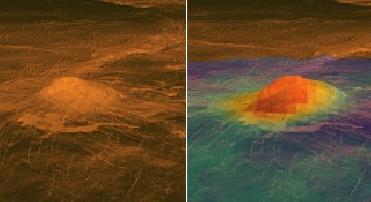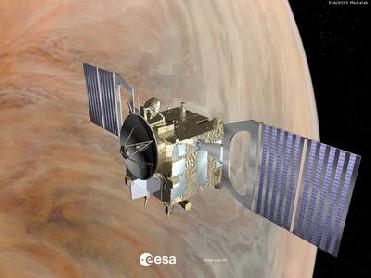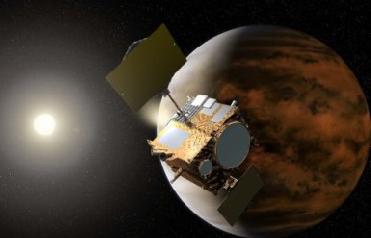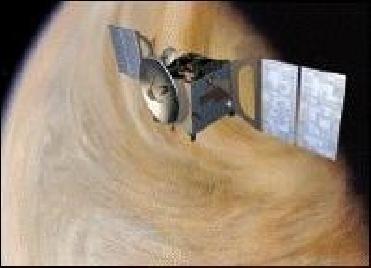
This video still shows the volcanic peak Idunn Mons (at 46 degrees south latitude, 214.5 degrees east longitude) in the Imdr Regio area of Venus. NASA/JPL-Caltech/ESA photo
PASADENA, CALIFORNIA (BNS): Scientists have for the first time detected clear signs of recent lava flow on the surface of Venus, suggesting that the planet may still be geologically active.
The observations reveal that volcanoes on Venus appeared to erupt between a few hundred years to 2.5 million years ago. The evidence comes from European Space Agency's Venus Express mission which has been in orbit around the planet since April 2006, a NASA statement said.
The science results were laid over topographic data from NASA's Magellan spacecraft. NASA�s Magellan radar-mapped 98 percent of the surface and collected high-resolution gravity data while orbiting Venus from 1990 to 1994.
Sue Smrekar, a scientist at NASA's Jet Propulsion Laboratory in Pasadena and her team has carried out the study which has been published in the journal Science.
Relatively young lava flows have been identified by the way they emit infrared radiation. These observations suggest Venus is still capable of volcanic eruptions.
"The geological history of Venus has long been a mystery," said Sue Smrekar."
Previous spacecraft gave us hints of volcanic activity, but we didn't know how long ago that occurred. Now we have strong evidence right at the surface for recent eruptions."
Scientists have previously detected plumes of hot rising material deep under Venus' surface. Those plumes are thought to have produced significant volcanic eruptions.
Other data from the planet suggest that volatile gases commonly spewed from volcanoes were breaking down in its atmosphere.
The rate of volcanism will help scientists determine how the interior of the planet works and how gases emitted during eruptions affect climate.
Scientists said Venus has only about 1,000 craters, a relatively small amount compared to other bodies in our solar system. They think it may be the result of volcanic activity and want to know if it happens quickly or slowly.
The Venus Express results suggest a gradual sequence of smaller volcanic eruptions as opposed to a cataclysmic volcanic episode that resurfaces the entire planet with lava.
Smrekar and her team also discovered that several volcanic features in the regions they studied show evidence of minerals found in recent lava flows giving scientists additional support for the idea they formed during recent volcanic activity.
Venus is called Earth's sister planet because of similarities in size, mass, density and volume. Scientists deduce that both planets shared a common origin, forming at the same time about 4.5 billion years ago.
The small group of worlds in our solar system known to be volcanically active today includes Earth and Jupiter's moon Io.
 Previous Article
Previous Article Next Article
Next Article













The Indian Air Force, in its flight trials evaluation report submitted before the Defence Ministry l..
view articleAn insight into the Medium Multi-Role Combat Aircraft competition...
view articleSky enthusiasts can now spot the International Space Station (ISS) commanded by Indian-American astr..
view article